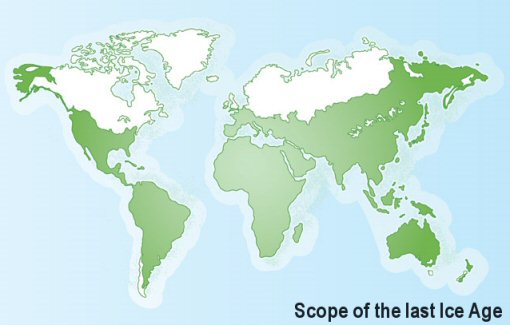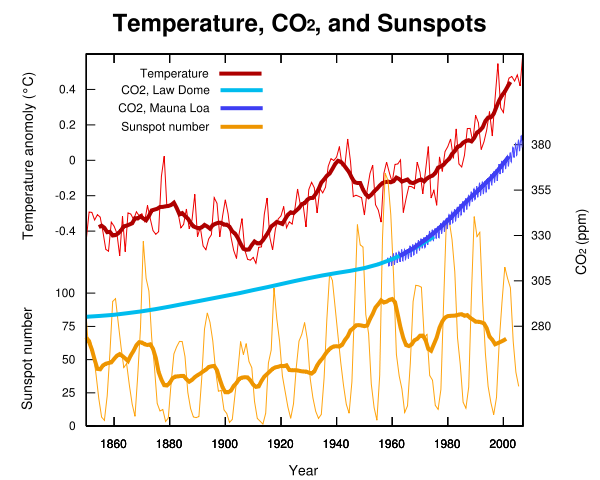Climate Change today - How much is natural and how much is caused by human activity?
Scientists at the Geological Society of London say -
How has this been discovered?
The key is found in looking at the evidence of the Ice Age.
The 'Ice Age' is actually a long set of colder (glacial) stages and warmer (interglacial) stages.

The last major glacial stage of the "Ice Age" ended thousands of years ago.
Since the ice melted back, the temperature has not been totally fixed, but the recent rise is very different.

The graph shows that after the ice melted, temperatures continued to rise for a few thousand years.
Around 8,000 years ago the global temperature steadied (with some 'wiggles') until about 4,000 years ago.
Then the Earth began to slowly cool, and that continued until modern times, with some variations.
So left to itself the Earth would be cooling towards a new glacial stage.Glacial stages are linked to regular patterns in the movements of the Earth.

The ice would start to return in around 1,500 years.
So the current rise in temperatures is not part of a natural cycle.

The natural cooling trend has been reversed.
This temperature rise is the effect of extra carbon dioxide.
The carbon dioxide has been produced mainly by burning fossil fuels.
(In the graph, Law Dome is a site in Antarctica where ice cores have been drilled to discover the ancient CO2 values - Mauna Loa is a site in Hawaii where the CO2 value has been measured in the air since the 1950s)